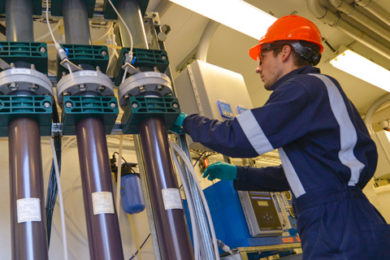BQE Water says it has entered into an engineering services agreement with Black & Veatch, an international engineering firm, for the design of a Selen-IX™ water treatment plant destined for a mine in the US.
The plant, at a scale larger than the currently constructed 6,400 m3/d Selen-IX treatment plant at Centerra Gold’s Kemess mine site in British Columbia, Canada, will remove selenium below three parts per billion limit at the end-of-pipe, the company said.
The plant will be designed to treat several thousand litres per minute of water on average and to adjust quickly to adapt to the changes in feed flow, according to BQE.
Jim Spenceley, VP Mining for Black & Veatch, said: “We recognise the value of BQE Water’s expertise in water treatment and the uniqueness of Selen-IX, which moves selenium control in the mining industry to a new level and enables important resource projects to be developed.
“The technological leadership of BQE Water, combined with Black & Veatch’s successful track record in delivering mission critical capital projects, matches perfectly the project requirements and we are excited to initiate the work jointly with BQE Water.”
David Kratochvil, President & CEO of BQE Water, said the ability of Selen-IX to remove selenium to levels below three parts per billion, coupled with the ability to quickly adapt to treatment requirements by fast turn-up and turn-down in terms of throughput, was key to signing this agreement.
“It also provides a platform for BQE Water and Black & Veatch to demonstrate to the mining industry our joint capabilities of delivering innovative water treatment solutions safely and cost effectively,” he added.
BQE Water successfully completed lab testing in 2019 that demonstrated the capability of Selen-IX to achieve the required water quality. The design of the water treatment plant is expected to be completed in the September quarter.
Selen-IX is a water treatment process technology that combines ion exchange and electro-reduction to remove selenium from large volumes of wastewater. As a purely physico-chemical process, it is insensitive to water temperature and is highly adaptable to variability in water flows and selenium levels, according to BQE Water. “The process fixes selenium into stable refractory non-hazardous solids suitable for co-disposal with tailings and potential offtake by steel producers,” the company said.










